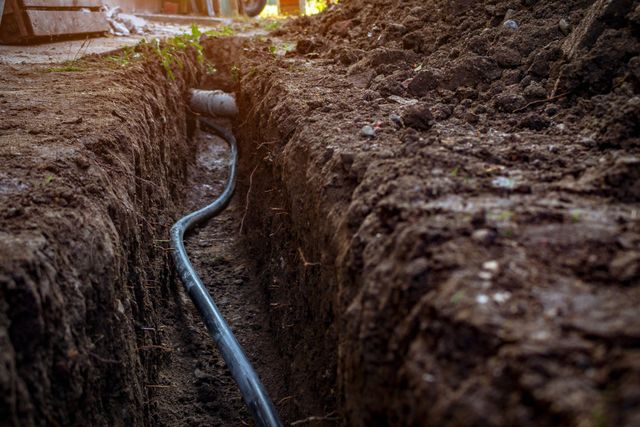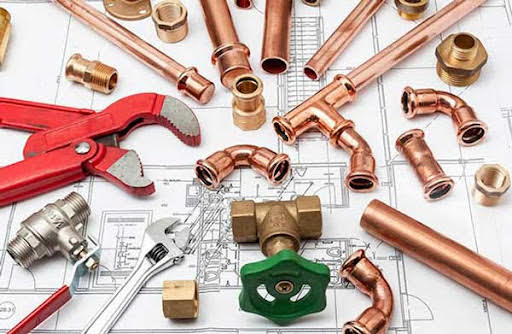Diving into the ABCs of Home Plumbing: A Beginner's Manual
Click HereThe publisher is making a few good pointers about What to Know About Plumbing: Basics, Tips, and Insights in general in this post on the next paragraphs.

Plumbing is a crucial element of any kind of home, in charge of providing tidy water for alcohol consumption, food preparation, and bathing, in addition to getting rid of wastewater securely. Comprehending the basics of home plumbing is important for every house owner to ensure appropriate upkeep, troubleshooting, and, if essential, repair services. In this novice's guide, we'll cover the essential principles of home plumbing to assist you become much more knowledgeable about exactly how it works.
Water System
The water system brings tidy water into your home from a community water source or a personal well. It includes a major water line that connects to your home's plumbing system, usually situated underground. A water meter determines the quantity of water consumed, while a shut-off valve permits you to manage the circulation of water into your home.
Plumbing Fixtures
Plumbing fixtures are devices that provide water to numerous parts of your home and include sinks, taps, bathrooms, showers, bath tubs, and home appliances such as dishwashers and washing makers. Each fixture is attached to the water supply system by means of pipes and installations and may have its shut-off valve for upkeep or emergencies.
Water Heating Unit
The water furnace is responsible for heating water for domestic usage, including bathing, cooking, and cleaning. Usual types of water heaters include tank-type water heaters, tankless (on-demand) hot water heater, and heatpump water heaters. The water heater is attached to the water system system and provides warm water to plumbing fixtures as needed.
Drain System
The drainage system removes wastewater from your home and brings it away to a sewer treatment facility or septic system. It consists of a network of pipes, fittings, and fixtures that move wastewater from plumbing components to the primary sewer line or sewage-disposal tank. Proper drainage is necessary to protect against obstructions, backups, and sewage leaks.
Ventilation System
The air flow system assists keep correct air pressure and protect against drain gases from entering your home. Air vent pipelines, also called air vent heaps, extend from plumbing components to the roofing, permitting drain gases to escape securely outside. Air flow pipelines also permit air to enter the drain system, promoting smooth wastewater circulation and stopping suction or vacuum cleaner impacts.
Typical Plumbing Tools
Having the right tools on hand is necessary for doing standard plumbing repair work and upkeep tasks. Typical plumbing devices include adjustable wrenches, monkey wrench, pliers, pipeline cutters, hacksaws, plungers, augers (or drain snakes), and Teflon tape. Having these devices conveniently available can assist you deal with minor plumbing concerns successfully.
Standard Plumbing Repair Work
While some plumbing fixings might call for specialist assistance, several typical concerns can be resolved with fundamental DIY methods. Knowing how to repair a leaky faucet, unclog a drainpipe, replace a commode flapper, or repair a trickling showerhead can save you money and time on plumbing fixings.
Final thought
Understanding the essentials of home plumbing is necessary for every homeowner to maintain a safe, useful, and effective plumbing system. By familiarizing yourself with the water system, plumbing components, drainage system, air flow system, usual plumbing tools, and standard repair work, you can with confidence address small plumbing issues and ensure your home's plumbing system operates smoothly.
Plumbing for Beginners: A Comprehensive Guide
If you’re a beginner when it comes to plumbing, don’t worry; you’re not alone. Plumbing may seem intimidating, but with the right knowledge and a little practice, you can handle many common plumbing issues on your own. In this comprehensive guide, we will demystify the world of plumbing for beginners, providing you with the basic knowledge and skills needed to tackle common plumbing problems and even take on some DIY plumbing projects.
The Importance of Basic Plumbing Knowledge for Beginners:
First and foremost, basic plumbing knowledge gives you a solid foundation. It helps you grasp the key concepts and terminology that are essential in this field. By learning the basics, you’ll be able to build upon that knowledge and tackle more complex plumbing tasks in the future.
Having a basic understanding of plumbing also enables you to handle common issues that may arise in your home. Picture this: a leaky faucet or a clogged drain. With some basic plumbing knowledge, you’ll have the confidence to troubleshoot and fix these problems on your own. It saves you from unnecessary expenses and the hassle of waiting for a professional to arrive.
As a beginner, learning the basics of plumbing empowers you to take care of your own home. It gives you a sense of independence and self-reliance. You’ll no longer have to rely solely on professionals for every small issue that pops up. Instead, you can handle many tasks yourself, saving time and money in the process.
Remember, everyone starts as a beginner. Embrace the learning process and take small steps to expand your plumbing knowledge. There are plenty of online resources, tutorials, and even local workshops that talk about plumbing for beginners.
Essential Tools for Plumbing for Beginners
As you start your plumbing journey, having the right tools in your toolbox is crucial. Let’s explore some of the must-have tools:
Adjustable Wrench:
This versatile tool is a staple in any plumber’s toolbox. It allows you to tighten or loosen nuts and bolts of various sizes. Make sure to have an adjustable wrench with a comfortable grip.
Pipe Wrench:
A pipe wrench is specifically designed for gripping and turning pipes. It has serrated jaws that provide a strong grip, making it easier to loosen or tighten threaded pipes and fittings.
Plunger:
The plunger is a simple yet effective tool for clearing clogged drains and toilets. It creates suction when you push and pull, helping to dislodge blockages. Keep a good-quality plunger handy for those unexpected clogs.
Pipe Cutter:
When it comes to cutting pipes, a pipe cutter is your go-to tool. It creates clean, precise cuts without damaging the pipe. Look for a pipe cutter that can handle the pipe sizes you’re working with.
Hacksaw:
A hacksaw is useful for cutting through pipes, screws, and other materials. It’s a versatile tool that can handle different cutting tasks. Remember to use a blade suitable for cutting metal.
Tape Measure:
Accurate measurements are crucial in plumbing. A tape measure allows you to measure pipe lengths, distances, and dimensions accurately. Opt for a sturdy tape measure that extends a good length.
Pliers:
Pliers come in handy for various tasks, such as gripping, bending, and cutting. Slip-joint pliers with adjustable jaws are great for gripping pipes, nuts, and bolts.

I was brought to that report on from an associate on a different web address. I beg you take the opportunity to promote this post if you enjoyed reading it. I am grateful for your time. Return soon.
Click Here